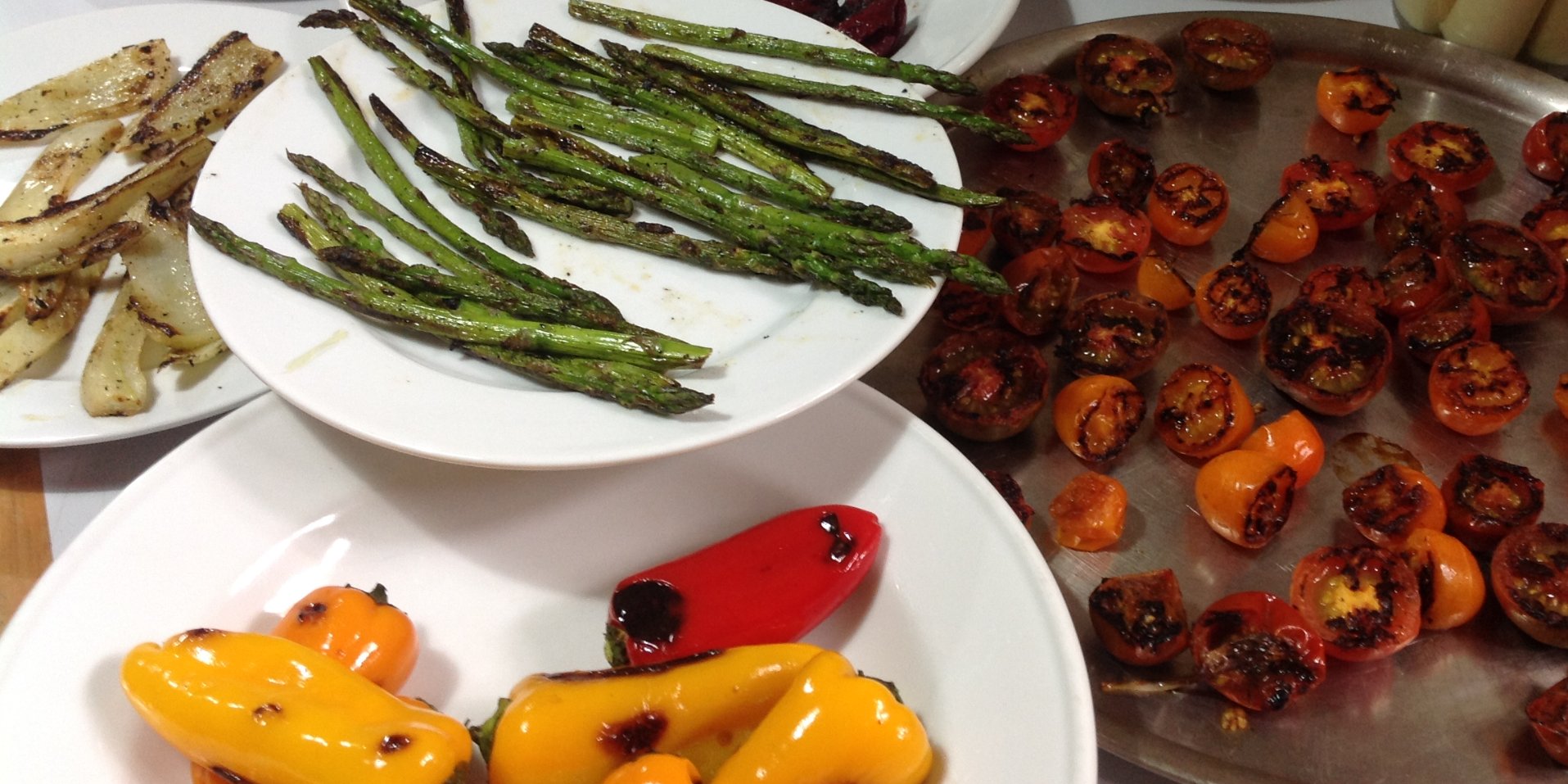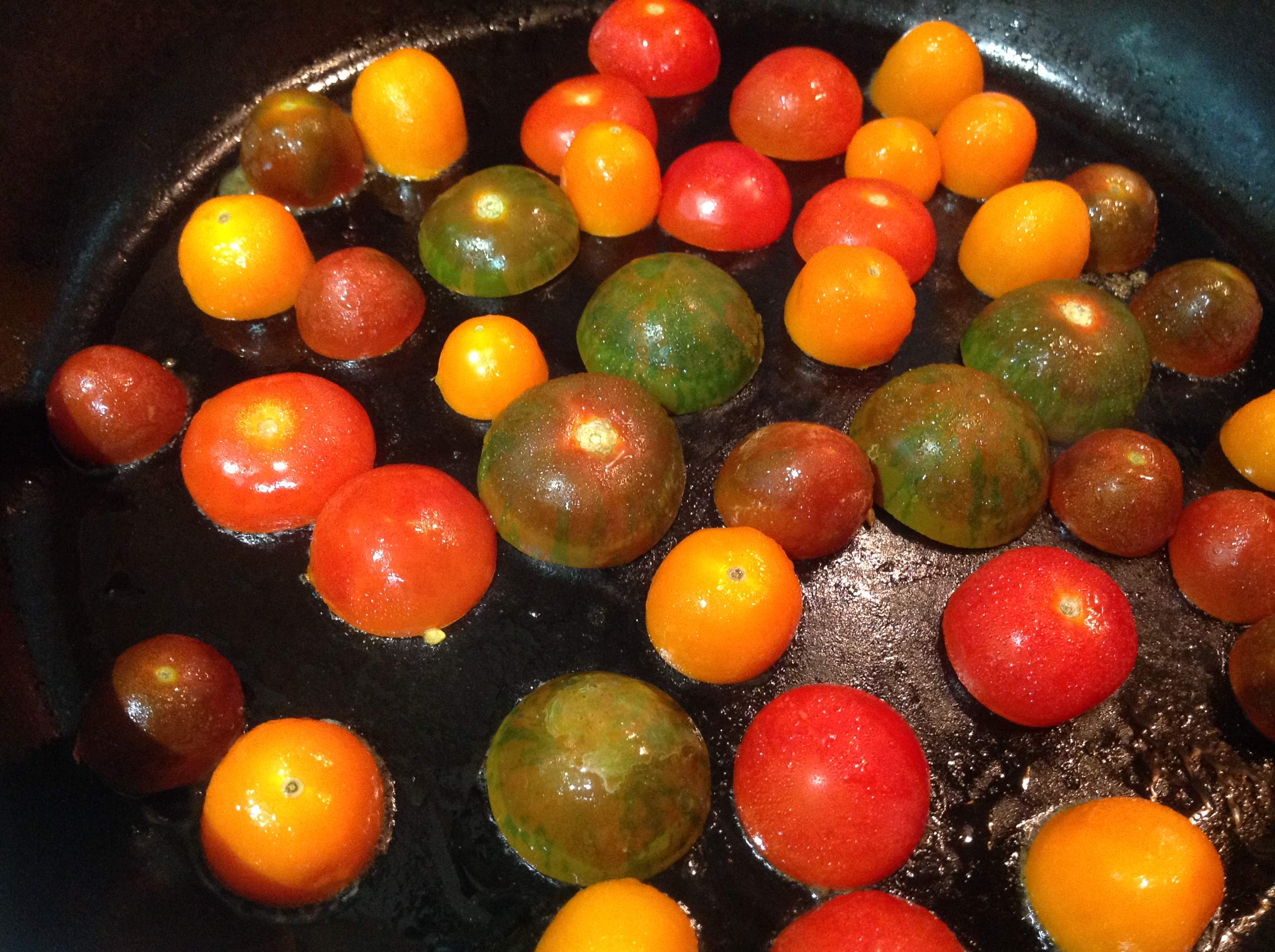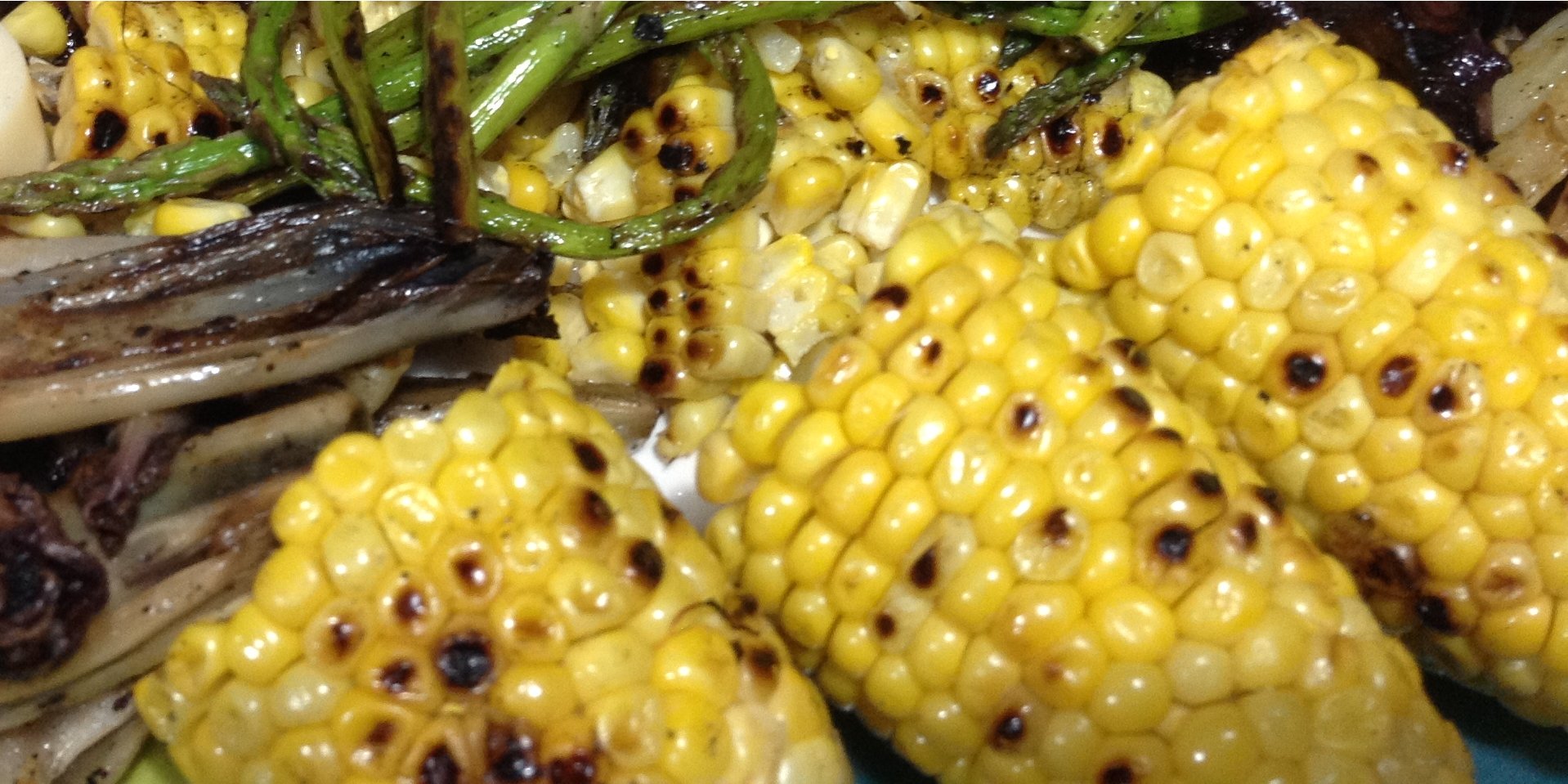Continued from: Burnt Vegetables! Part 1
It takes practice to burn vegetables … and expertise!
It sounds silly doesn’t it? That: “It’s OK to burn food“. Or that your spouse could be happy when you say with pride: “Darling, I’ve managed to burn dinner!”
But as renowned Argentinean chef, Francis Mallmann, explains in his book, Seven Fires, “the right amount of burning or charring can be delicious and seductive”.
Given his enthusiasm, we started to experiment with burnt vegetables some months ago. In fact, with understanding guests coming for dinner – guests who would forgive us if things didn’t turn out quite right – we experimented on several different vegetables. The next photo contains some of the finished products. We apologise for the quality of the photos, but we decided that it would not hurt to show how our first practice session went.
The Mallmann approach
We have all unintentionally burnt food before, however, there are different types of burning. The steamed rice that has just caught on the bottom of the saucepan can be quite tasty if it hasn’t gone too far; too far, though, and you have inedible acridness and you will spend a week cleaning the bottom of the pot. At a barbecue, onions fried on the hotplate are one of the tastiest things going. But they need to be taken just to the right stage: not too soft but not too dried out. Barbecuing over an open flame is a sure way of burning food too much where the flames take over and before you know it your sausages have a casing of charcoal. How often do we burn the toast and try to salvage it by scraping off the carbonised surface. Over-burnt food is gritty – it is no longer food but charcoal!
Mallmann is very enthusiastic about “the taste of burnt“. His aim is to develop a delicious crust full of concentrated flavours. He explains that there is an element of danger and excitement in this form of cooking. “Take the burning too far, and it destroys the dish. Stay just this side of the of the line, and it is lovely.” To achieve this result his first commandment for working with high heat is “Don’t Touch“. That means being patient, not moving the food and not flipping it until just the right time. That is where the practice comes in and he explains that with time you will recognise when it is time to turn the food or remove it from the heat.
He writes: “Flip it too quickly, and you won’t have a crust. But wait too long and you’ll have a black, overly burnt result. While I love the taste of burnt, its elegance comes from just having some charring, not incineration.”
Following is a photo of our mixed baby tomato halves in the process of being burnt. It really required a great deal of restraint not to move them nor flip them over!
Some brief notes on his techniques
For his burnt vegetable recipes he usually recommends using a large, ordinary cast iron skillet with a flat surface. However, a ridged one is acceptable. We also used frying pans of varying surfaces and sizes. Heat the implement well before putting on the vegetables – take it to a high heat where a drop of water sizzles.
He oils the vegetables before putting them on to cook. Don’t over-crowd the vegetables on the cooking surface and do not move them once they hit the surface. Turn them just once – at the point where the bottom surface is charred but not charcoal. Serve the vegetables as is or with a suitable vinaigrette dressing.
Many vegetables are suitable for burning. Some vegetables need to be in slices.
He gives a recipe for burnt cherry tomatoes and shaved fennel with mustard vinaigrette. (The cherry tomatoes are halved and the cut surface cooked first.) He gives methods for burnt zucchini and carrot and caramelised endive.
We also tried charring baby capsicums, baby asparagus and corn cobs. We also cooked beetroot in the oven, then smashed it before charring.
Accompanied by a suitable dressing, we served the vegetables together with some of the burnt corn shaved off the husk and scattered over the top.
Following are some photos of the results of our first practice. A month or so later we discovered charred vegetables on the menu at Geronimo – at the end of this post you have the chance of finding out how they burn their vegetables.
For Geronimo’s method see: Burnt Vegetables! Part 3






